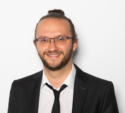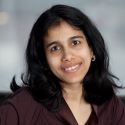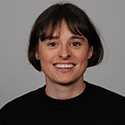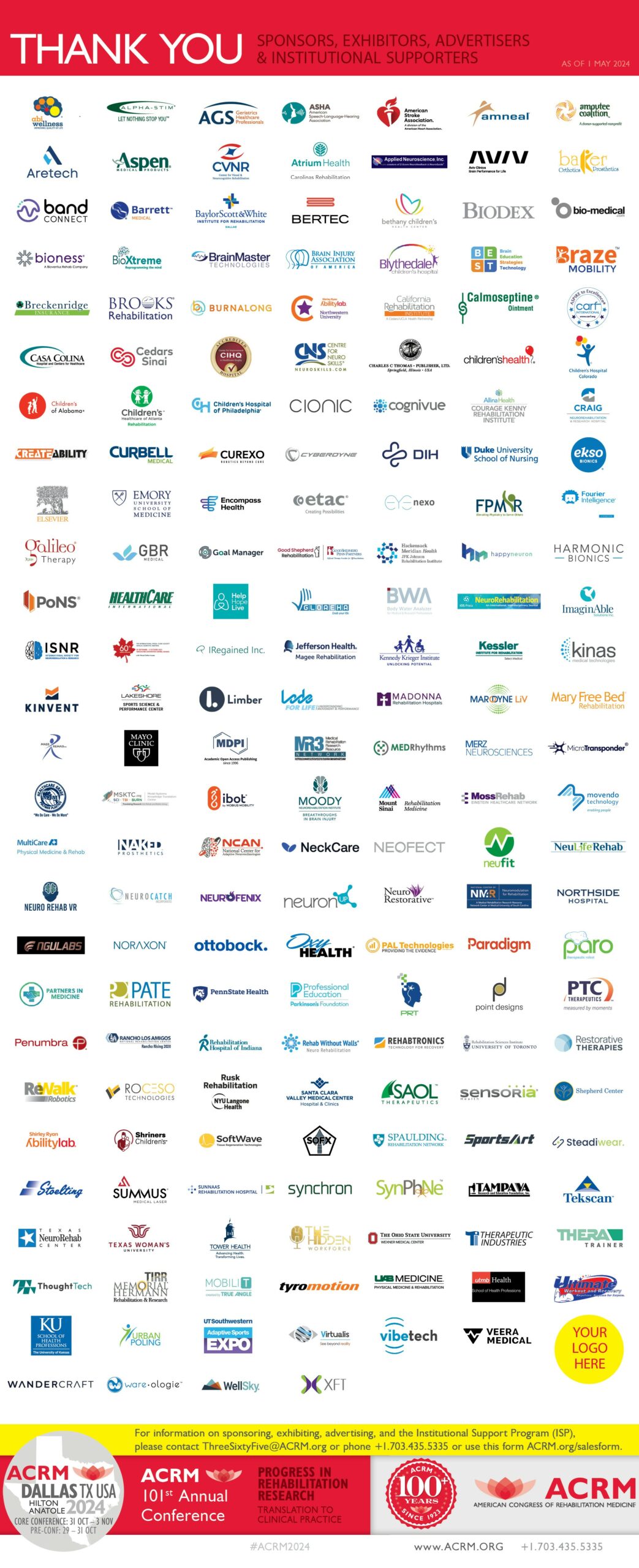
2023 Edition
Interviews
An interview with the 2023 Bernard Brucker International Symposium Speaker, Stephen Bornheim, PT, PhD.
 Dr. Stephen Bornheim was born in South Africa and lived there for 9 years before moving to France, where he graduated from high school. He moved to Belgium and studied physical therapy, where he graduated from Liège University in 2014. He went on to get his second master’s degree from Liège University in Sports Physical therapy, and in 2021 he defended his PhD thesis on non-invasive brain stimulation. He has been teaching neuro-rehabilitation at Liège University since 2015, both theoretical and practical courses, and since 2014 he has been working as a physical therapist in the Liège University Hospital, in the neurological internal medicine ward and Stroke Unit. He currently lives in Belgium with his wife and baby son.
Dr. Stephen Bornheim was born in South Africa and lived there for 9 years before moving to France, where he graduated from high school. He moved to Belgium and studied physical therapy, where he graduated from Liège University in 2014. He went on to get his second master’s degree from Liège University in Sports Physical therapy, and in 2021 he defended his PhD thesis on non-invasive brain stimulation. He has been teaching neuro-rehabilitation at Liège University since 2015, both theoretical and practical courses, and since 2014 he has been working as a physical therapist in the Liège University Hospital, in the neurological internal medicine ward and Stroke Unit. He currently lives in Belgium with his wife and baby son.
Q1: Tell us about your involvement in the field of Rehabilitation?
I have worked in the neurological internal medicine ward and Stroke Unit for 9 years as well as the ICU and neurosurgical ward. I spend a lot of time with acute patients. I also teach interns, lecture at university and do research. I have a privileged role, where I help advance the field of neuro-rehabilitation, apply it to my patients, and teach it to my students. If I had to summarize my goals into one sentence, it would be to transmit my passion for neurology to the future generations.
Q2: How have you been impacted by the switch to telemedicine over the past two years? Do you feel it positively or negatively impacts care for clients?
Clinically speaking, it hasn’t affected my practice, as I work in an acute ward. Research wise, there has been a huge movement towards telemedicine in the previous years. As a physical therapist, we are trained to have a “hands-on approach”. But we are also trained to give patients work to do outside of therapy. Telemedicine could be an interesting adjuvant to conventional rehabilitation, in certain cases. So I do see it as a positive. However, we mustn’t forget that a lot of patients want, and need, the “hands-on” aspect. Doing exercises in front of a computer with a therapist watching you, or having them physically guiding you, are two different things. There is also a social aspect of going out to physically see your therapist. For some, it’s the only time that they leave the house. Taking that away could emotionally be very taxing for some.
Q3: Tell us about your current position and/or most recent research/projects.
I am currently an associate professor at Liège University, in the motricity science & physical therapy department. I am also a physical therapist at the Liège University Hospital. My current research projects are on non-invasive brain stimulation, more specifically tDCS, and its use in rehabilitating stroke patients. I’m also doing work on tDCS in athletes’ performances.
Q4: Who has been one of the most influential people throughout your career and why?
My previous mentor when I was a student, the physical therapist that worked in the same ward that I am currently working in. Neurology was not a particularly appealing subject for me as a student. Spending a month with him completely changed my views. I saw how passionate you can be about your work, and how useful a neurological physical therapist could be in helping patients.
Q5: What are some challenges you have encountered in your field and what tools assisted you in conquering those challenges?
As a physical therapist, I found that I had to prove how essential we are to the newer generation of doctors, most of them younger than us. Every year we change interns, and have to show them that we do have a very good understanding of neuropathology and anatomy, and that our roles are complementary to theirs, and essential, and not just a “nice to have”.
Research wise, the appeal of new technologies is heavily outweighed by the lack of willingness to change current practices. Often with tDCS I get people telling me that the technique seems great, but they won’t use it because it’s not what they have been doing previously during their career.
Q6: What top 3 hobbies or activities do you look forward to during free time?
With a young child, I think most parents will agree that my current hobbies include a lot of cleaning, making funny faces and laundry. But, I love going for long walks with my wife and baby. But I enjoy going on hikes and also long walks with my wife and baby, playing table-top games with friends, and a wide variety of sports.
An interview with our very own member and co-chair of the I-ISIG Refugee Empowerment Task Force, Mansha Parven Mirza, PhD, OTR/L.
 Mansha Mirza has advanced doctoral and postdoctoral training in disability studies and health services research. Her research focuses on identifying and addressing disparities in health and rehabilitation services among low-income, underserved communities, with a special interest in new immigrant and refugee groups. She has special expertise in occupational therapy programming with forced migrants.
Mansha Mirza has advanced doctoral and postdoctoral training in disability studies and health services research. Her research focuses on identifying and addressing disparities in health and rehabilitation services among low-income, underserved communities, with a special interest in new immigrant and refugee groups. She has special expertise in occupational therapy programming with forced migrants.
Tell us about your involvement in the field of Rehabilitation?
I am a clinically trained and licensed occupational therapist. I completed my undergraduate degree (Bachelor of Science) in occupational therapy in India and worked as a home-based rehabilitation provider for older adults for about a year. After that, I came to the United States for graduate education and completed both my Master of Science in Occupational Therapy and my PhD in Disability Studies at the University of Illinois Chicago. I also completed two years of postdoctoral training in health services and outcomes research at Northwestern University in Chicago. Currently I consider myself as an academic and researcher in the field of rehabilitation.
How have you been impacted by the switch to telemedicine over the past two years? Do you feel it positively or negatively impacts care for clients?
I have not been in clinical practice for a while. Therefore, the switch to telemedicine did not directly affect me or my work. However, I have been doing research on accessibility of telemedicine/telehealth services for patients/clients with limited English proficiency. In the United States, English is the default language used in healthcare settings, including telehealth. However, there are laws and policies that mandate provision of appropriate language supports in publicly-funded healthcare services. My research team, and I, are investigating how language supports have been and are being incorporated into telemedicine visits. We have even published a narrative review on this topic where we identify the positive and negative impacts of telehealth on refugees and asylees with limited proficiency in the dominant language where they reside. Our review can be accessed at this site: https://threer.kinsta.cloud/articles/promises-and-pitfalls-of-telehealth-for-refugees-and-asylees/
Tell us about your current position and/or most recent research/projects.
I am an Associate Professor in the Department of Occupational Therapy at the University of Illinois Chicago. My current position involves a combination of research, teaching, and administrative service. I have a few ongoing research projects. One is a 5-year multisite research program focusing on health promotion among immigrant families from Latin America with children with developmental disabilities. In another project we’re examining workflow dimensions of incorporating language supports within telerehabilitation services for persons with limited English proficiency. This is the project I referred to in my response to the previous question. I am also leading a Research Area Mapping Platform project on Refugees, Rights and Resettlement funded by the Social Science Research Council. The platform focuses on the topics of resettlement and asylum policies, public health impact, and psychosocial and community participation needs of refugees during and after resettlement. The goal of this web-based platform is to serve as a resource for interdisciplinary and interprofessional networking, and a go-to repository of credible and reliable information on these topics.
Who has been one of the most influential people throughout your career and why?
It’s difficult to name a single person. I have always been inspired and continue to be inspired by my colleagues at the University of Illinois Chicago, within the ACRM Refugee Empowerment Task Force, and many of the community leaders and advocates I have collaborated with over the years.
What are some challenges you have encountered in your field and what tools assisted you in conquering those challenges?
Much of my research is community-engaged and focuses on immigrant communities in the United States. It takes a lot of time and effort to build trust with these communities, to explain the value of research, and to demystify the research process. This is especially difficult to do as research projects are limited by contractual agreements and funding periods making sustainable engagement with communities difficult after grant funding ends. There are no magic tools that I know of to conquer this challenge. One way I try to address this challenge is by budgeting for community engagement and dissemination activities within my grants from the get-go. I also try to maintain contact with communities in between research projects through volunteer work or service-learning activities with my students.
What top 3 hobbies or activities do you look forward to during free time?
I enjoy cooking, reading, and visiting local museums.
An interview with our very own member and co-chair of the I-ISIG I-ISIG COVID-19 Task Force, Fransiska M Bossuyt, PhD.
 Fransiska M. Bossuyt, PhD is oberassistentin (senior research assistant) at the Laboratory for Movement Biomechanics at the ETH Zurich (Switzerland) where she is spearheading a project on shoulder health in vulnerable populations. She is especially interested in the role of scapular kinematics and understanding soft-tissue injuries by studying failure properties and the functional capacity of muscles and tendons and to apply this knowledge to improve injury prevention and treatment options. Dr. Bossuyt completed a BS c and MSc in Physical Education and Movement Sciences at Ghent University (BE). Following an MSc in Clinical and Sports Biomechanics at the Liverpool John Moores University (UK), she pursued a PhD at the Swiss Paraplegic Research and the University of Luzern (CH). She is co-chairing the COVID 19 taskforce within the International-ISIG of the ACRM where she is also Early Career Officer
Fransiska M. Bossuyt, PhD is oberassistentin (senior research assistant) at the Laboratory for Movement Biomechanics at the ETH Zurich (Switzerland) where she is spearheading a project on shoulder health in vulnerable populations. She is especially interested in the role of scapular kinematics and understanding soft-tissue injuries by studying failure properties and the functional capacity of muscles and tendons and to apply this knowledge to improve injury prevention and treatment options. Dr. Bossuyt completed a BS c and MSc in Physical Education and Movement Sciences at Ghent University (BE). Following an MSc in Clinical and Sports Biomechanics at the Liverpool John Moores University (UK), she pursued a PhD at the Swiss Paraplegic Research and the University of Luzern (CH). She is co-chairing the COVID 19 taskforce within the International-ISIG of the ACRM where she is also Early Career Officer
Tell us about your involvement in the field of Rehabilitation?
Throughout my career, I have been engaged in rehabilitation research, with a focus on understanding and mitigating musculoskeletal injuries. My research endeavours have spanned a diverse range of areas, from investigating risk factors and preventive measures for various musculoskeletal injuries to estimating loading and studying responses to loading. I have conducted investigations across patient populations, including those with a spinal cord injury, shoulder and anterior cruciate ligament injuries, high-performance athletes, isolated tendon and muscle tissues, and animal models. My personal interest also led me to co-chairing the COVID-19 Taskforce of the International ISIG (I-ISIG) of the ACRM and being a member-at-large within the I-ISIG.
How have you been impacted by the switch to telemedicine over the past two years? Do you feel it positively or negatively impacts care for clients?
Over the past two years, I feel the shift to telemedicine has had a notably positive impact on healthcare and my personal experience. The increased adoption of telemedicine has greatly enhanced accessibility and availability to healthcare services. No longer constrained by geographical limitations, patients as well as myself have been able to easily connect with medical professionals and specialists from the comfort of their home. This change has not only saved time and effort but has also opened doors to different opportunities for tailoring healthcare to specific needs. Virtual appointments have allowed for more convenient scheduling, reducing the need to take time off work or arrange extensive travel. Additionally, the flexibility of telemedicine has empowered to seek out second opinions and explore a broader range of medical expertise, ultimately contributing to a more informed and comprehensive approach to healthcare.
Tell us about your current position and/or most recent research/projects.
Until the end of August 2023, I held the role of postdoctoral researcher at the Swiss Paraplegic Research, within the Neuromusculoskeletal Functioning and Mobility Group. During this time, my research focused on investigating shoulder function and mobility among individuals with a spinal cord injury. This endeavour involved delving into the complexities of neuromuscular interactions and the influence of neuromuscular fatigue on shoulder functioning within this population. As of September 1, 2023, I transitioned into a new position as Oberassistentin (Senior Assistant) within the Laboratory for Movement Biomechanics at the Faculty of Health Sciences and Technology at ETH Zurich (Switzerland). In this exciting new role, I am spearheading a pioneering project centred around shoulder health. More specifically, our research aims to illuminate the critical role of scapular movement and shoulder loading in maintaining optimal shoulder health. To achieve this, we are leveraging the revolutionary tracking dual-plane fluoroscopy system—a technology with only one existing worldwide. This remarkable tool will allow us to gain unprecedented insights into the intricate mechanics of the scapula during movement, contributing to a deeper understanding of shoulder health and potentially revolutionizing rehabilitation strategies and pre-operative planning.
Who has been one of the most influential people throughout your career and why?
I have been fortunate enough to cross paths with a number of remarkable mentors, individuals who continue to be an integral part of my journey. Dr. Michael Boninger, my PhD advisor, stands out as a driving force in my scientific path, offering unwavering guidance, invaluable advice, and steadfast support. His decision to embark on this academic voyage, alongside the research trips to Pittsburgh, introduced me to a network of exceptional researchers. Dr. Jos Vanrenterghem and Dr. Mark Robinson played pivotal roles during my research in Liverpool, instilling in me a profound passion for biomechanics. Dr. Ann Cools enriched my understanding of shoulder health and rehabilitation, while Dr. Walter Herzog provided unique insights into biomechanics and animal research during my Post Doc in Calgary. Recently, the support and momentum given by Dr. Bill Taylor as I step into a new chapter is deeply appreciated. Learning from these experts in their respective fields has been an honor and a pleasure. They not only imparted knowledge but also showcased their way of life, whether through physical vigor or adeptly balancing family and career. Their empathy and grace in challenging situations have been a daily lesson. These mentors have generously granted me space to grow, while remaining steadfastly available for guidance. They showed me that we can give people hope, and encourage the fortitude to make a difference.
What are some challenges you have encountered in your field and what tools assisted you in conquering those challenges?
In spinal cord injury research, I’ve confronted several challenges, and among them, securing funding for shoulder-related studies in wheelchair users with spinal cord injuries stands out. The relatively small size of this specific study population often makes it challenging to garner adequate financial support for research endeavours. However, I’ve found that collaborating and establishing connections with experts globally has been a pivotal tool in surmounting this obstacle. By pooling our collective knowledge and resources, we’ve managed to elevate the quality of our research outcomes and amplify our efforts to secure funding. Through these inter-disciplinary collaborative efforts, we’ve not only expanded the reach of our investigations but also increased awareness around the importance of these topics and how they can be expanded to different fields since many people also in the general population suffer from similar shoulder problems. The synergy of expertise and the united pursuit of advancing shoulder research in spinal cord injury patients have proven to be instrumental in overcoming the funding hurdle and driving meaningful progress in this field.
What top 3 hobbies or activities do you look forward to during free time?
I am deeply engaged in the world of rowing. I love dedicating my time to coaching para rowing and being responsible within the Organising Committee for its inclusion at the prestigious Lucerne Regatta in Switzerland. My responsibilities extend to overseeing para rowing events in world cups, the last qualifying Paralympic regatta, as well as world championships. Beyond my organising role, I am also an avid rower at competitive level, relishing the physical and mental challenges the sport offers. In a pursuit to balance my interests, I have also delved into goldsmith classes.



